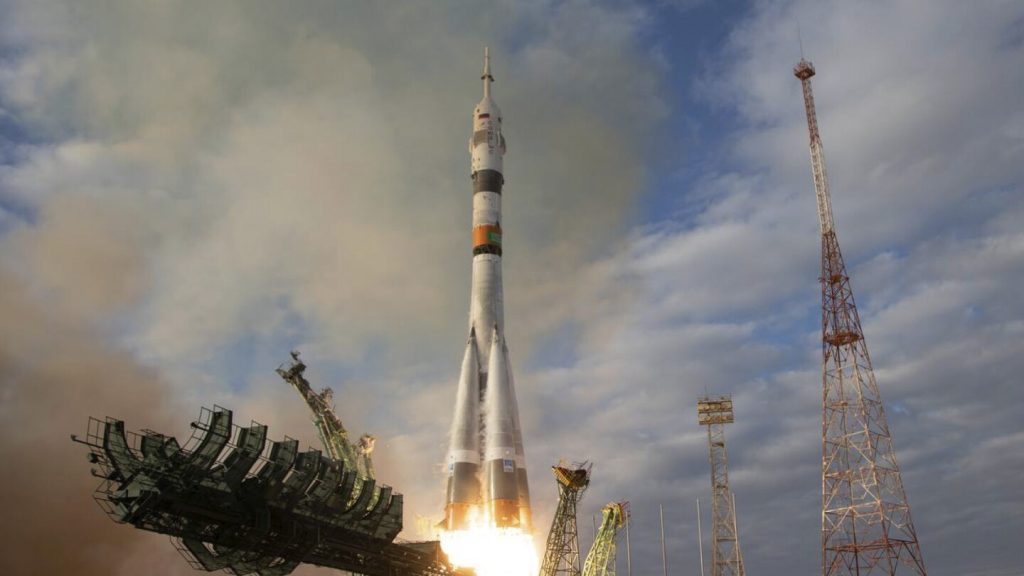After a two-day delay due to an aborted launch attempt, a Russian spacecraft successfully docked at the International Space Station on Monday. The Soyuz MS-25 spacecraft carried three astronauts – NASA astronaut Tracy Dyson, Russian Oleg Novitsky, and Marina Vasilevskaya of Belarus. The crew reached the space outpost after launching from the Baikonur launch facility in Kazakhstan. The launch attempt was halted on Thursday by an automatic safety system, but Roscosmos and NASA confirmed that the crew was not in danger during the abort.
The head of the Russian space agency, Yuri Borisov, stated that the launch abort was triggered by a voltage drop in a power source. The three astronauts aboard the spacecraft have now joined the current crew at the space station, which includes NASA astronauts Loral O’Hara, Matthew Dominick, Mike Barratt, and Jeanette Epps, as well as Russians Oleg Kononenko, Nikolai Chub, and Alexander Grebenkin. Dyson, on her third trip to the orbital complex, is set to spend six months at the station before returning to Earth in September with Kononenko and Chub, who are completing a year-long mission.
Novitsky, making his fourth flight to the orbiting outpost, is joined by Vasilevskaya, who is on her first space mission as Belarus’ first astronaut. The duo will spend 12 days on the station before returning to Earth along with O’Hara. The International Space Station has been a symbol of post-Cold War international cooperation and serves as one of the last remaining areas of collaboration between Russia and the West, amidst tensions over Moscow’s military actions in Ukraine. NASA and its partners are looking to continue operating the orbiting outpost until 2030, highlighting the importance of continued cooperation in space exploration.
The successful docking of the Russian spacecraft at the International Space Station marks another milestone in global space exploration. The collaboration between NASA, Roscosmos, and other international partners on the space station demonstrates the ability of nations to work together towards common goals in space exploration. The crew aboard the station will conduct various scientific experiments and research during their time in orbit, contributing valuable data to our understanding of space and its effects on the human body.
The presence of astronauts from multiple countries onboard the station also reflects the diverse nature of modern space exploration efforts. The crew will work together to maintain the station, conduct spacewalks, and support ongoing research initiatives. The successful completion of the docking procedure highlights the precision and expertise of the astronauts and ground control teams involved in the mission. As the crew settles into their new home in space, they will continue to work towards advancing scientific knowledge and pushing the boundaries of human exploration beyond Earth.
The continued operation of the International Space Station until 2030 underscores the long-term commitment of the international community to space exploration and research. Despite geopolitical tensions on Earth, the cooperation in space exploration serves as a testament to the ability of nations to come together for the greater good of humanity. The astronauts aboard the station will not only conduct important scientific work but also inspire future generations to pursue careers in space exploration. The successful docking of the Russian spacecraft at the space station further solidifies the collaboration between nations in the quest for knowledge and discovery beyond our planet.


